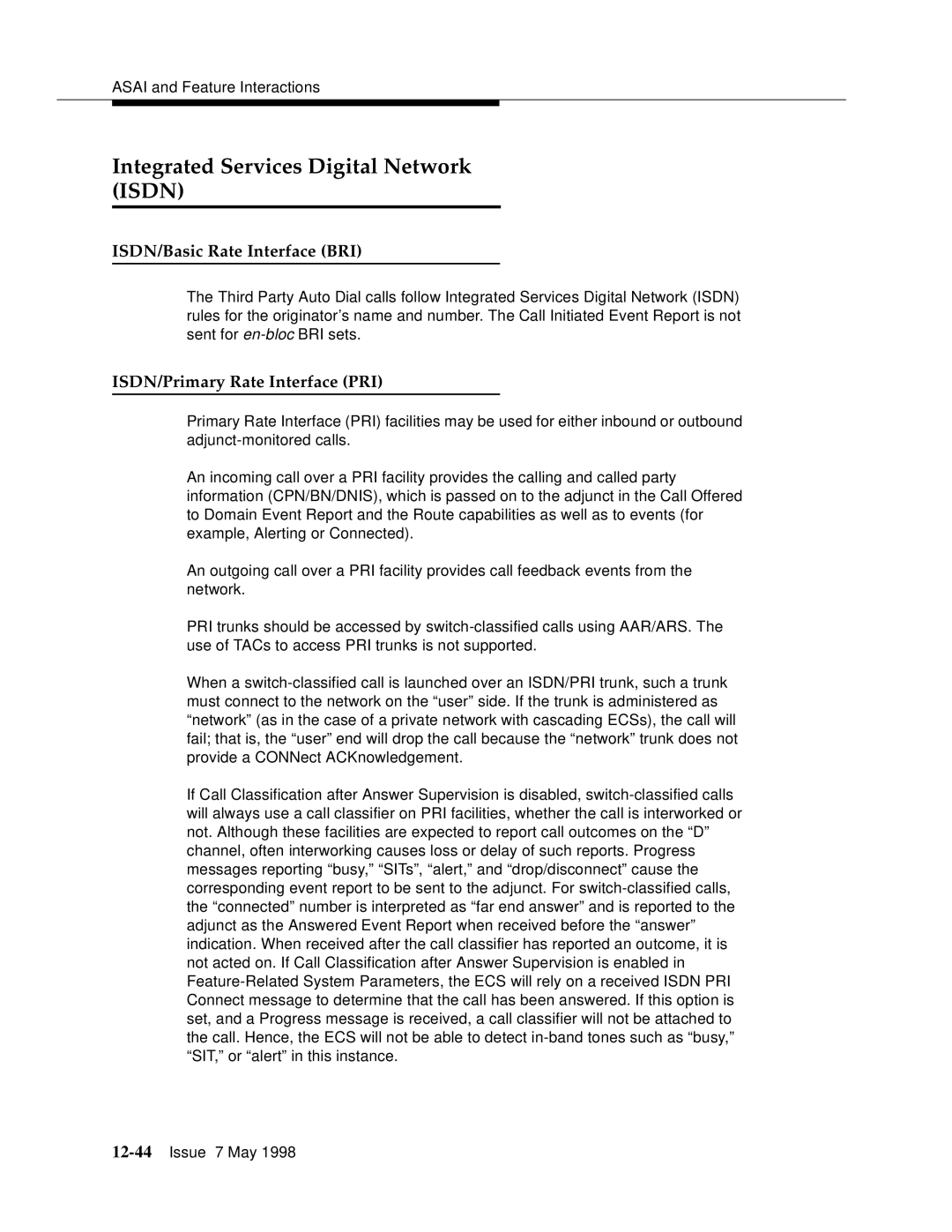
ASAI and Feature Interactions
Integrated Services Digital Network (ISDN)
ISDN/Basic Rate Interface (BRI)
The Third Party Auto Dial calls follow Integrated Services Digital Network (ISDN) rules for the originator’s name and number. The Call Initiated Event Report is not sent for
ISDN/Primary Rate Interface (PRI)
Primary Rate Interface (PRI) facilities may be used for either inbound or outbound
An incoming call over a PRI facility provides the calling and called party information (CPN/BN/DNIS), which is passed on to the adjunct in the Call Offered to Domain Event Report and the Route capabilities as well as to events (for example, Alerting or Connected).
An outgoing call over a PRI facility provides call feedback events from the network.
PRI trunks should be accessed by
When a
If Call Classification after Answer Supervision is disabled,
